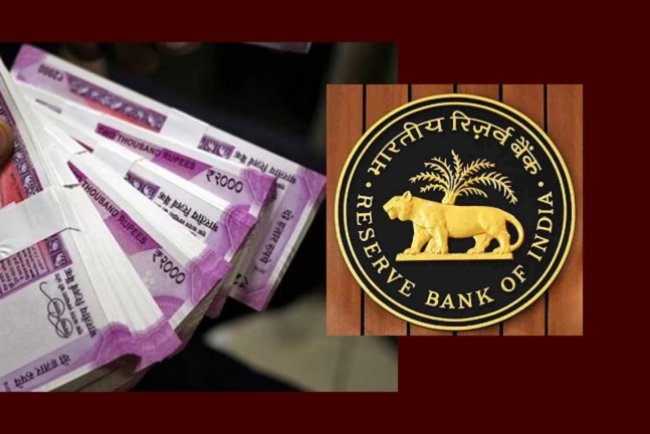The Maha Kumbh Mela 2025 Economic Impact
The Maha Kumbh Mela 2025 will thus give a lot of impetus to the economy of India mainly in Uttar Pradesh. It will attract millions to visit the location during the events, and it will boost all tourism, transportation, hospitality, and retail sectors locally. Even a large number of small local operators, such as hotels, restaurants, and stores, shall enjoy the effects of these hundreds of thousands coming. It shall generate employment through the improvement in roads, sanitation, and public transport. Indian culture and heritage would also be the focus of this event. Everything would run very smoothly with government and private investments; thus, it would transform this region into a big spiritual destination. On an overall level, Maha Kumbh Mela 2025 shall strengthen the economy with strong long-term benefits.

what's Kumbh Mela?
Kumbh Mela is an ancient Hindu pilgrimage that happens every 4 years, rotating through four sacred sites: Prayagraj, Haridwar, Ujjain, and Nashik. The festival dates are determined according to the astronomical position of Jupiter, the sun, and the Moon. Thousands of pilgrims take part in the festival as a ritual for spiritual cleansing through bathing in holy rivers. Worldwide pilgrims, saints, and religious heads also assemble here at the religious congregation and hence reflect a global appeal of this congregation.
Cultural and Economic Impact
The Maha Kumbh Mela to be held between January 13th and February 26, 2025, is going to attract four hundred million devotees. A budget of ₹6,382 crore ($800 million) is sanctioned, an increase of a whopping 72% from 2019 Kumbh. This event will break all monetary standards.
According to the Confederation of All India Traders (CAIT), 80% of visitors are likely to incur between ₹6,000 and ₹8,000 each. Such expenditure would produce financial transactions in the range of ₹2–2.five lakh crore ($25–30 billion) over the 45-day event, which translates to about zero.8% of India's GDP.
A comparison over a decade shows the event has grown exponentially:
| Year | Tourist Arrivals (in crores) | Budget Allocation (₹ Cr) | Financial Transactions (₹ Cr) | Financial Transactions (% of GDP) |
|---|---|---|---|---|
| Puru Kumbh 2013 | 8 | 1,300 | 12,000 | 0.12% |
| Ardh Kumbh 2019 | 24 | 3,700 | 1,20,000 | 0.63% |
| Maha Kumbh 2025 | 40-45 | 6,400 | 2,50,000 | 0.77% |
The economic magnitude of the Maha Kumbh Mela is said to be the highest with 60% similarity with the marriage and Diwali expenses India incurs per year.
Industrial Areas Expected To Benefit
1. Tourism and Hospitality
The Mela will attract tens of millions of visitors, which also comprise more than 1 million international tourists, thus greatly enhancing foreign exchange income. With a capital outlay of nearly ₹5,000 crore in infrastructural development, including roads, railways, airports, and hotels, the tourism region is likely to generate sales of ₹40,000 crore.
2. Retail and consumer goods
The demand for everyday requirements and customer goods throughout the event is projected to create a turnover of ₹20,000 crore. Key categories contributing to this growth consist of groceries (₹4,000 crores), suitable-for-eating oils (₹1,000 crores), and milk merchandise (₹4,000 crores).
3. spiritual gadgets and Handicrafts
Sales of spiritually oriented products, food, garments, and souvenirs are likely to rake in Rs 20,000 crore alone, while the handicraft section alone can potentially add another Rs 5,000 crore to contribute to the monetary value of cultural wealth the whole event has represented.
4. Transportation and aerial tours
Transportation offerings are expected to generate ₹10,000 crore in sales. a unique feature this year is a helicopter service imparting aerial perspectives of the occasion. With each trip priced at ₹5,000, this provider is projected to draw 7,000 visitors every day, producing over ₹157 crore for the duration of the event.
Relevance to Educational and Professional Sectors
The economic boom that the Maha Kumbh Mela 2025 has brought along further opens up prospects for those interested in career courses such as Accounting courses, Taxation, and GST courses. The enormous amount of transactions that take place in the event further necessitates experts who are efficient in taxation, accounting, and GST compliance. These courses prepare individuals to deal with such a huge financial business but also promote career advancement in the tourism, retail, and infrastructure development sectors.
Conclusion
Maha Kumbh Mela 2025 is much more than a congregation; it would be a strong catalyst for an economic transformation. The tourist traffic and consequently the jobs along with government revenues, it gives rise to various infrastructural changes in the nation.
What's Your Reaction?
















